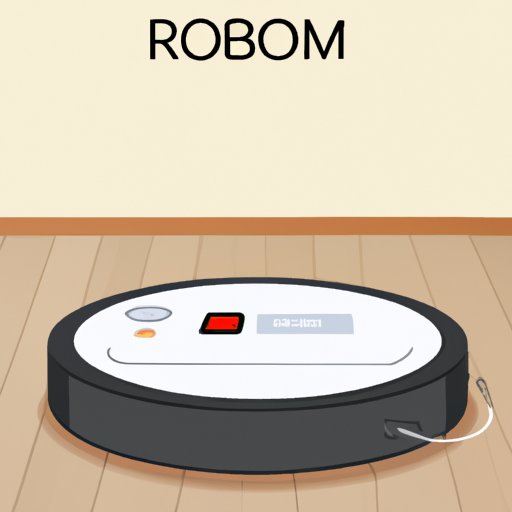Introduction
The Roomba is a robotic vacuum cleaner that has been around since 2002. It was developed by iRobot, a company specializing in intelligent robotics and autonomous mobile robots. The Roomba is designed to autonomously clean your home without any human intervention. It uses sensors and advanced algorithms to detect dirt, debris, and pet hair, and then move around the room to clean it up.
Exploring the Anatomy of a Roomba
At the heart of the Roomba is an array of sensors that help it detect obstacles in its path and navigate around them. This includes infrared sensors, wall-following sensors, cliff sensors, and a gyroscope. The Roomba also has a spinning side brush, a powerful suction system, and a large dustbin for collecting dirt and debris.
The Roomba’s cleaning cycle consists of three steps. First, it uses its sensors to detect dirt, debris, and pet hair. Then, it moves around the room, using its side brush to sweep debris into its path. Finally, it uses its powerful suction system to suck up the debris and collect it in the dustbin. Once the dustbin is full, the Roomba will automatically return to its charging station.

Pros and Cons of Automated Vacuuming with a Roomba
Using a Roomba comes with both advantages and disadvantages. On the plus side, it can save you time and effort since you don’t have to manually vacuum your floors. Additionally, it can reach tight corners and spaces that are difficult to access with a traditional vacuum cleaner. And since it’s automated, you don’t need to monitor it while it’s in use.
On the downside, the Roomba isn’t as powerful as a regular vacuum cleaner. Additionally, it can get stuck in tight spots and can be easily confused by obstacles and furniture. And since it relies on sensors, it may miss some dirt and debris.
What Makes Roomba Different from Other Robotic Vacuums?
Roomba stands out from other robotic vacuums because of its advanced features. For instance, it has Dirt Detect technology, which allows it to detect dirtier areas and focus its cleaning efforts there. It also comes with a scheduling feature, so you can program it to clean at certain times of the day. Plus, it has a built-in Wi-Fi connection, allowing you to control it remotely via the iRobot Home app.

How to Use a Roomba for Optimal Performance
If you want to get the most out of your Roomba, there are a few tips you should keep in mind. First, make sure to clear away any obstacles or clutter that might impede its movement. Second, regularly empty the dustbin to ensure maximum suction power. Third, schedule regular cleaning sessions to prevent dirt and debris from accumulating. And fourth, be sure to check the brushes and filter for any blockages.

A Comprehensive Guide to Roomba Maintenance and Troubleshooting
In order to keep your Roomba in top condition, it’s important to regularly maintain it. This includes checking the brushes, wheels, and filters for any blockages and replacing them when necessary. Additionally, it’s important to keep the sensors and wheels clean, as dirt and debris can interfere with the Roomba’s ability to navigate properly.
If you encounter any problems with your Roomba, the first step is to troubleshoot the issue. Common issues include the Roomba getting stuck, not responding to commands, or not charging correctly. If these issues persist, contact iRobot customer service for assistance.
How Does a Roomba Fit Into Your Smart Home?
Roomba robotic vacuums are designed to integrate seamlessly into your smart home. With built-in Wi-Fi connectivity, you can control your Roomba remotely via the iRobot Home app. Additionally, it can be connected to voice assistants such as Amazon Alexa and Google Home, allowing you to control it with simple voice commands. You can even set up schedules and routines through these platforms.
Conclusion
The Roomba is an advanced robotic vacuum cleaner that can save you time and effort when it comes to cleaning your home. With its array of sensors and advanced features, it can tackle even the toughest cleaning jobs. Plus, it can integrate into your smart home for added convenience. With proper maintenance and troubleshooting, you can ensure that your Roomba provides optimal performance for years to come.
(Note: Is this article not meeting your expectations? Do you have knowledge or insights to share? Unlock new opportunities and expand your reach by joining our authors team. Click Registration to join us and share your expertise with our readers.)
